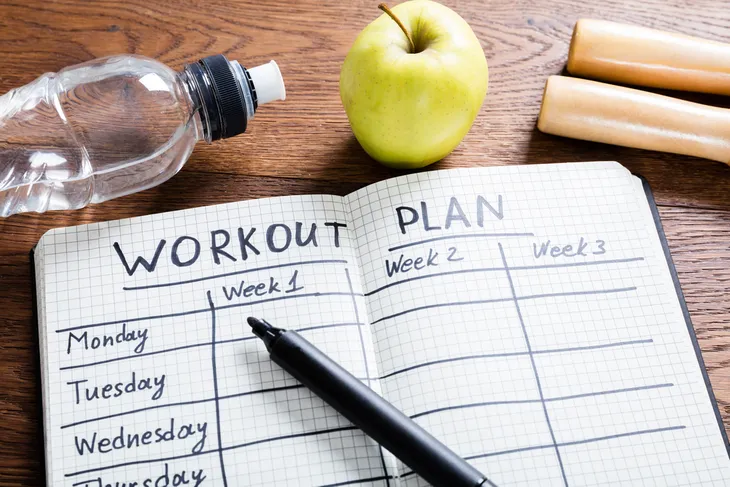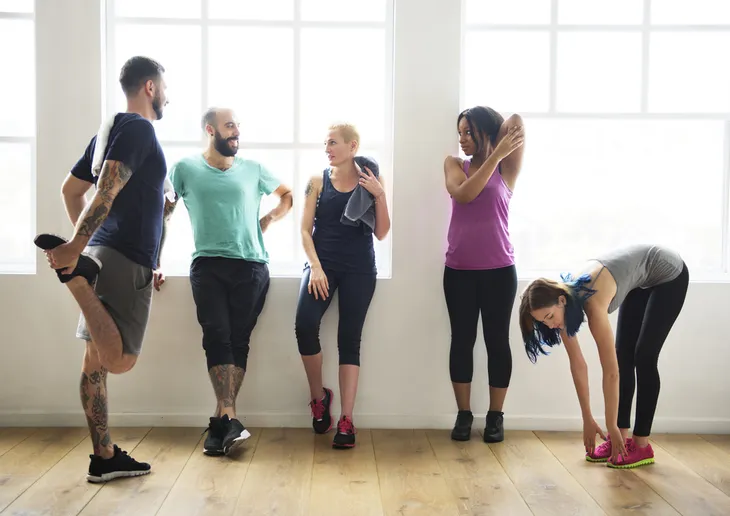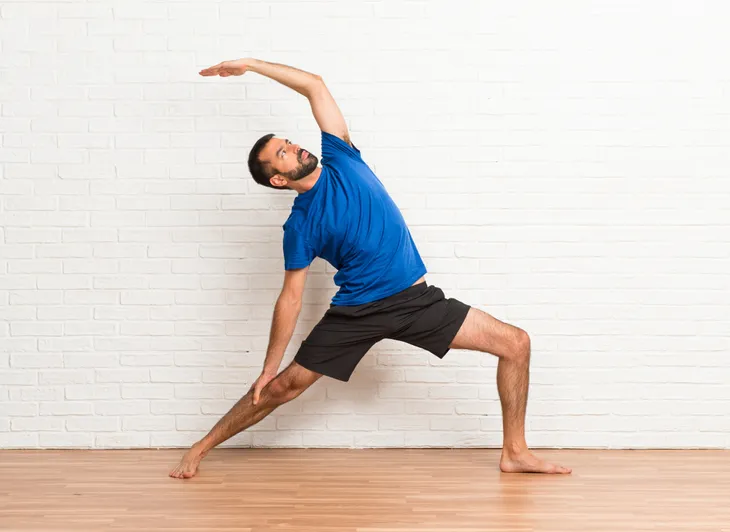When it comes to exercise, we all know it is good for us and many of us try to add exercise to our lifestyles, but when it comes to sticking with it, we fall short. In fact, research has suggested that approximately 60-percent of those embarking on a new exercise regime will fall off the workout wagon by month six. Why become a statistic?
Below is a list of the most common do’s and don’ts for those wishing to make exercise a lifelong habit…
1. Do Review Past Attempts at Exercise
Albert Einstein once said that insanity could be defined as doing the same thing over and over again while expecting the same result. We tend to fall into this insanity trap when we fail to review past attempts at behavior change and make the necessary alterations. When it comes to previous exercise experiences, it is important to address the reasons why we fell off the wagon. Through examining the past, we can plan a different approach while considering the barriers that got in the way.
For example, if an “exercise drop out” did so because of the lack of time, the creation of a condensed exercise program may be the answer. If the novice exerciser quits due to boredom or lack of enjoyment, the answer may be to keep things interesting (i.e. add music or change up the playlist). It is important to learn from previous experiences to create that bulletproof plan that may lead to lifelong exercise.
2. Don’t “Just Do It”
Although this is a popular phrase on posters and memes, it can lead to much disappointment and frustration in the long run. Most of us that jump into an exercise program without much thought or consideration will most likely quit over time. Whether the exercise drop out is due to injury (too much, too soon, too fast, too hard) or lack of time and enjoyment, the cards are stacked against anyone who “just does it”.
Before embarking on a new exercise program, take some time to consider the type of exercise, the current fitness level, and the time it require (realistically). Keep in mind, a little exercise goes a long way. Beginning very slowly and thoughtfully will increase one’s chances of sticking with it and reduce the chance of overuse injury.
3. Do Consider the Present Barriers to Exercise Participation
After reviewing the previous exercise attempts it is now time to take a snapshot at the present barriers that may get in the way of the best laid plans to workout. Things like work, kids, extra-curricular expectations of family life, and the like will definitely leave little time for physical activity. Although it is easy to jump into a plan, the chances of dropping out go up without taking a realistic look at what we can and cannot accommodate.
Exercise adoption is hard enough without having to squeeze it tightly into an already loaded schedule. The key to lifelong exercise is starting slow and progressively adding more days and/or times to the workout schedule. Begin with two days a week for only 30-minutes a session and see what happens. Once the benefits begin to show up (i.e. more energy, reduced stress, and perhaps a shift in body composition), it may be the motivation needed to add more time to the program.
4. Don’t Believe What You Hear
It is so easy to fall into the trap of empty promises and flashy gimmicks and the fitness industry has its’ fair share of these. From programs and exercise classes promising fast and easy weight loss to the latest exercise equipment, a novice exerciser can get seduced very easily. The most important rule of thumb when navigating the many exercise options is simple: if it sounds too good to be true, it is.
Critical thinking is important when making sound and safe exercise choices. Just because we have heard that a certain celebrity has found weight loss success through joining upside down belly dancing doesn’t mean we should. There are many reliable sites on the internet that may help weed through the options to find what is right for us. Scholar Google can serve as an option if one is interested in reading a paragraph on what the researchers have to say on the subject. No matter the method, but sure to get both sides of the story before hanging upside down on a rope while attempting the downward dog.
5. Do Make it Fun
No matter what exercise psychologists offer as a theory to explain exercise adoption and drop out, these theories pale in comparison with the theory of enjoyment. While not technically a theory, if one doesn’t enjoy the type of physical activity chosen, the potential for drop out is greater. It is possible to have fun while exercising but we do have to take a moment to ask ourselves what exercise is suitable for us. From ballroom dancing and horseback riding to hiking in nature and beachcombing, there are a wide variety of ways to get fit.
Adding enjoyment and fun to our exercise plan creates a sense of excitement in addition to the desire to do more than our allotted time. For example, choosing a stationary bike may influence us to monitor the time on the bike (not to mention count down the minutes until we can get off). Conversely, we tend to ignore time limitations when we take the bike outside for a ride. Make no mistake; overlooking exercise enjoyment will be the demise of any well intentioned exerciser.
6. Don’t Make it a Competition
One of the easiest ways to ensure exercise dropout is compete with others (especially when it comes to weight loss). Not only does weight loss and fitness competitions increase the rate of exercise attrition, it can lead to exercise and eating disorders (not to mention the list of overuse injuries).
While there remains a belief that rewards and competitions will change behavior, research has shown that external motivators, while motivating for the short term, will increase the rates of dropout in the long term. Conversely, internal motivations such as increased health, fitness, and quality of life set the novice exerciser up for successful, lifelong physical activity.
7. Do Exercise in a Group
Exercising with others is one of the more popular suggestions made by both personal trainers and exercise psychologists. Group fitness classes such as yoga, aerobics, or group cycling come with the workout buddies already supplied. The scariest step is always going to the first session, but once we integrate into a class we enjoy, the adherence to exercise becomes easier.
We tend to feel a sense of responsibility to other class participants or workout buddies when we exercise with others.By mutually motivating each other (when we would rather sit on the couch and channel surf) the chances of being seduced by the couch are less. Plus, it is a great social outlet when we just need to vent or talk about our day.
8. Don’t Overdo It
Just like doing too little exercise can lead to illness so can too much of it. In addition to an increased rate of injury, over exercising can weaken our immune system function; potentially leading to an enhanced rate of illness. If that wasn’t enough motivation to exercise in moderation, over exercising can also increase our chances of drop out.
So what is “enough exercise”? Although this is more of an individual question, a novice exerciser may begin with only two days per week to start while slowly adding more days over the months ahead. Exercise psychologists have suggested that when a new exerciser starts with more than two days, the rate of exercise drop out increases. Although the desire to jump right into a program can be overwhelming, if we can focus on the long term investment (rather than the short term) we may join the 40-percent of exercisers that make it stick for life.
9. Do Plan, Record, and Reflect
Although it has been suggested by fitness professionals to record keep, ironically, the act of record keeping can be overwhelming at times. As a new exerciser, it is important to create and plan our exercise schedule, record the basics of each session (i.e. time, exercises, and comfort/enjoyment rating), and take some time to reflect after each week to avoid things like injury, boredom, or other conflicts that may come up.
Record keeping may be tedious, but it is important when starting a new behavior to keep track of those details that may get missed overtime. If we do slide back into old behaviors, we can refer to our records with the hopes that they may uncover a barrier that may have been overlooked. For example, if we record our level of enjoyment from 1 (hated it more than a root canal) to 10 (loved it more than a trip to Disneyland), we may get a sense of what is working and what isn’t.
10. Don’t Overlook Safety
Fitness technology has come a long way since the days of weight lifting in damp, dark spaces located in the back alleyways. From ergonomically sound exercise equipment to fitness gear that helps support, lift, and train in alignment, we can now enjoy the fruits of the labors of exercise science. When making our final choice of exercise modality, it is important to consider the safety equipment necessary to reduce potential injury.
What type of footwear is appropriate? Do we need to consider head and eye protection? Are the pieces of equipment we chose to use ergonomically set up for all shapes and sizes? What safety mechanisms are in place on cardio machines such as a treadmill or elliptical trainer? These are some examples of questions to consider that will not only enhance our sense of safety but lower our chances of exercise drop out due to injury.
11. Do Be Patient with the Change
Although many still believe it only takes 21-days to create a habit, the facts are a little less efficient. There are so many factors that make or break adherence to exercise no one can accurately predict how long it will take to make change stick. A habitual exerciser may find he relapses back to old sedentary behaviors after changing his environment (i.e. moving from a town that has easy access to exercise activities to another that doesn’t). From big life changes and weather to lack of money and opportunity, there are many reasons why we fall off the wagon and find ourselves back on the couch again.
Any behavior change takes patience. Understand that we will all experience a lapse (a temporary slip up) into old behaviors but with action plans in place, we are more able to get back into new behaviors sooner than later. A relapse, on the other hand, is more of a long term slip up to the old sedentary lifestyle without taking the steps to get back to exercise. Through practicing patience with ourselves and our progress, we are more able to get back on the wagon rather than relapse into old behaviors. Again, remember, it is a long term investment in our health and fitness for life.














